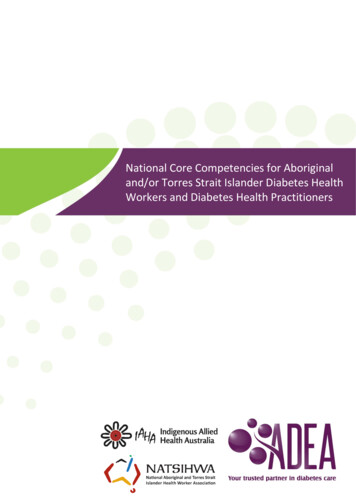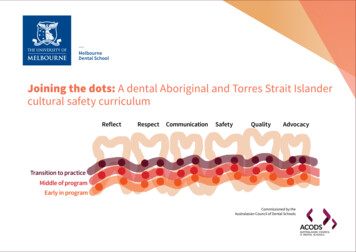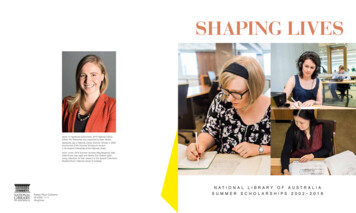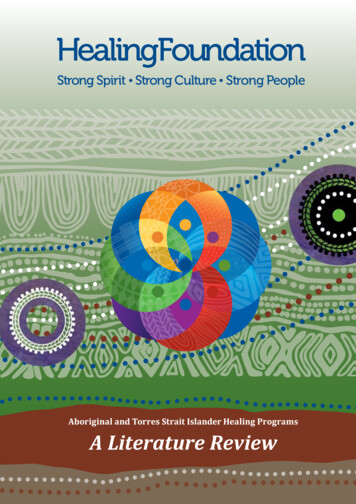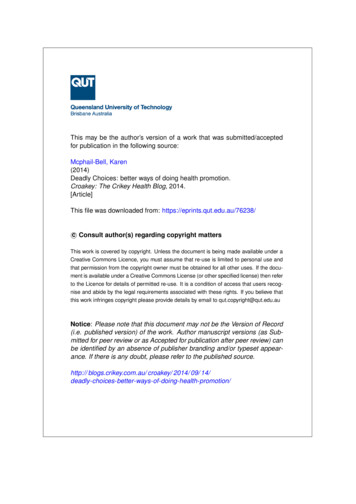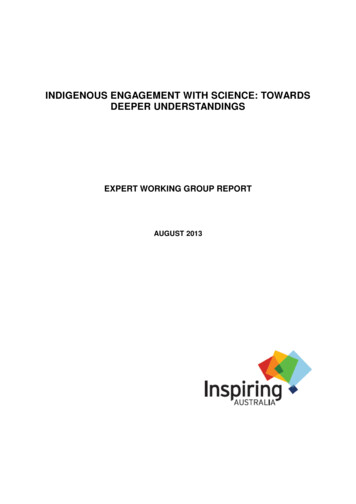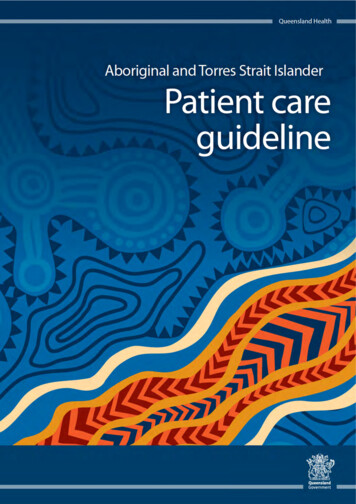
Transcription
ContentsPurpose . 2Background .2Section 1Factors influencing access to healthcare. 3Cultural factors.3Social and historical factors.4Accessing services from remote locations.4Section 2Providing culturally capable patient care . 5Culturally appropriate communication .6Gathering information .8The hospital experience.9Section 3Aspects of clinical care . 11Medical examinations.11Diagnosis and treatment .11Administration of medication.13Pain management.13Patient discharge .14End of life care .15Other healthcare support .15Queensland Health Aboriginal and Torres Strait IslanderPatient care guideline1
PurposeHealthcare is delivered in a demanding and complex health system wheretreatment of the patient’s condition is the primary focus. There are howeversome fundamental ways in which the health system can better meet theneeds of Aboriginal and Torres Strait Islander people.Taking a person-centred approach (i.e. lookingat the whole person) will not only ethicallyallow patients to be directly involved andempowered in their care, but will take intoaccount the patient’s cultural and individualneeds, preferences, beliefs, values as well astheir comfort and surroundings. This approachwill improve the patient’s experience and healthoutcomes, and benefit health services clinicallyand organisationally. It is also aligned with thecore principles of the Australian Safety andQuality Framework for Health Care and theAustralian Charter of Healthcare Rights.This guideline is designed as a quick referencetool to support healthcare staff in deliveringsafe, clinically and culturally responsiveinpatient care to Aboriginal and Torres StraitIslander patients. The guideline providesgeneral advice only and does not address thediverse cultural differences across Australia.For skills building and knowledge about yourlocal area participation in the QueenslandHealth Aboriginal and Torres Strait IslanderCultural Practice Program in your Hospitaland Health Service is highly recommended.BackgroundIn comparison to non-Indigenous people,Aboriginal and Torres Strait Islander peopleexperience far worse health for almost every majorcause of mortality and morbidity; continue to behospitalised at much higher rates for most healthconditions; have poorer outcomes of care and havelower access to health interventions.Access to healthcare continues to remain asignificant problem for Aboriginal and Torres StraitIslander people. Before even accessing the healthsystem, the health of many individuals and familiesis already compromised on a daily basis due to anumber of structural and social factors: living in regional and remote communitieswhich are areas of most socioeconomicdisadvantage and where the greatest burdenof disease exists due to lack of access topreventative or illness management services living in major cities/urban communities inareas of greatest disadvantage low socio-economic status and environmentaland socio-political factors a high prevalence of health risk factors.From a service provision perspective, the qualityand level of healthcare can be influenced by: performance gaps of the health system(including access) in addressing health needs cultural incompetence (which researchdemonstrates is linked to risks and poorquality health outcomes) communication barriers (which researchdemonstrates may lead to adverse eventsand poor quality of care).Queensland Health Aboriginal and Torres Strait Islander2Patient care guideline
NotesQueensland Health Aboriginal and Torres Strait Islander16Patient care guideline
preventative or illness management services † living in major cities/urban communities in areas of greatest disadvantage † low socio-economic status and environmental and socio-political factors † a high prevalence of health risk factors. From a service provision perspective, the quality and level of healthcare can be influenced by:


